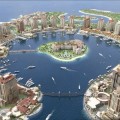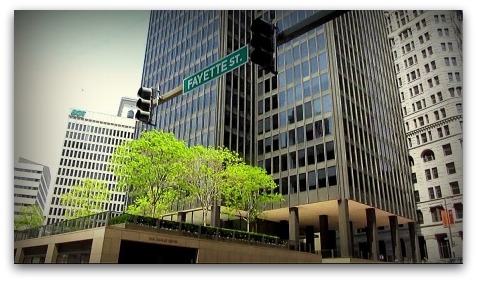Richest Countries – Based on GDP
A few countries arrive at fortune on the grounds that they’re sitting on great measures of mineral assets, others since they have put intensely in industry and engineering, and others on the grounds that they are tourists’ safe houses producing amazing incomes every year. Whatever the excuse for why that helps these nations’ economies, a standout amongst the most target pointers we can use in standing the planet’s richest countries by GDP. GDP speaks to the business sector esteem of all official last administrations and items inside a nation in a particular time period. The GDP for every capita, then again, is a gauge dependent upon populace estimate and it speaks to a pointer used to rank the expectation for everyday comforts inside a country, instead of the whole abundance of the nation. With this being said, we have assembled a rundown of the planet’s 10 wealthiest nations in 2013, standing them consistent with GDP.
#1) United States of America is the Richest Country by GDP
(GDP: – USD$16.238 trillion)
The United States has a businessperson blended economy, which is energized by rich regular assets, a generally advanced framework, and high benefits. Consistent with the International Monetary Fund, the U.S. GDP of $16.238 trillion constitutes 22% of the terrible planet item of business sector trade rates and over 19% of the horrible planet item at purchasing power equality (PPP). In spite of the fact that bigger than any possible nation’s, its national GDP was something like 5% more diminutive at PPP in 2011 than the European Union’s, whose populace is around 62% higher.
#2) China (GDP: – USD$13.623 trillion)
Starting in 2013, China has been the planet’s second richest country regarding ostensible GDP, totaling pretty nearly US $ 13.623 trillion as per the International Monetary Fund (IMF). If PPP is considered (US$12. 405 trillion in 2012), China’s economy is again second just to the United States. In 2012, its PPP GDP for every capita was US$9, 161, while the ostensible GDP for every capita was something around USD 6,075. These scenarios put China behind around ninety nations (out of 183 nations on the IMF record) in worldwide GDP for every capita rankings.
#3) India (GDP: – USD$5.032 trillion)
Consistent with the International Monetary Fund, starting in 2013, the Indian economy is ostensibly worth the US $5.032 trillion; it is the eleventh-biggest economy by business trade rates, and is, at US$4.962 trillion, the third-biggest by acquiring power, equality, or PPP. With its normal yearly GDP development rate of 5.8% in the course of recent decades, and arriving at 6.1% throughout 2011–12, India is one of the planet’s quickest developing economies. Be that as it may, the nation ranks 140th on the planet in ostensible GDP for every capita and 129th in GDP for every capita at PPP.
#4) Japan (GDP: – USD$4.779 trillion)
The economy of Japan is the fourth richest on the planet by ostensible GDP, the fourth biggest by Purchasing Power Parity, and is the planet’s second biggest advanced economy. As per the International Monetary Fund, the nation’s every capita GDP (PPP) was at $35,855, or the 22nd most astounding in 2012. Japan is a part of the Group of Eight. The Japanese economy is anticipated by the Quarterly Tankan review of business slant led by the Bank of Japan. Japan is the planet’s third biggest vehicle assembling nation, has the biggest gadget products industry, and is regularly stacked up as far and wide as possible most inventive nations heading some measures of worldwide patent filings.
#5) Germany (GDP: – USD$3.270 trillion)
Germany has a social market economy with quite gifted labor energy, a huge capital stock, a low level of debasement, and an abnormal amount of enhancement. It has the biggest and most influential national economy in Europe, the fifth biggest by ostensible GDP on the planet, the fifth biggest by PPP, and was the grandest net patron of the EU plan in 2011. The administration part helps give or take 71% of the sum GDP, industry 28%, and agribusiness 1%. The official normal national unemployment rate in June 2013 was 6.6%.
#6) Russia (GDP: – USD$2.641 trillion)
Russia has a business sector economy with colossal regular assets, especially oil and characteristic gas. It has the sixth biggest and richest economy on the planet by ostensible GDP and the eighth by buying power parity (PPP). The nation finished 2008 with its ninth straight year of development, averaging 7% every twelve months between 2000 and 2008. Genuine GDP for every capita, PPP (current universal $) was 19,840 in 2010.
#7) Brazil (GDP: – USD$2.467 trillion)
Brazil is the biggest and richest national economy in Latin America, the planet’s seventh biggest economy at business trade rates, and the seventh biggest in obtaining power equality (PPP), as per the International Monetary Fund and the World Bank. Brazil has a blended economy with bottomless common assets. The Brazilian economy has been anticipated to turn into one of the five biggest on the planet in the decades to come, the GDP for every capita accompanying and developing, gave that vast speculation in benefit increases are made to substitute the GDP development of the most recent decade that is attributable to the increment in the number of individuals working.
#8) United Kingdom (GDP: – USD$2.391 trillion)
The UK has a part of the way managed business economy. In light of business sector trade rates, the UK is today the eighth-biggest economy on the planet and the third- richest country in Europe after Germany and France, having fallen behind France without precedent in over a decade in 2008. HM Treasury, headed by the Chancellor of the Exchequer, is answerable for advancing and executing the British government’s open account strategy and investment approach. The Bank of England is the UK’s national bank and is answerable for issuing notes and coins in the country’s cash, the pound sterling.
#9) France (GDP: – USD$2.290 trillion)
A part of the G8 aggregation of heading industrialized nations, France is stacking up as the ninth biggest and the EU’s third biggest and richest economy in the world by buying power equality; with 39 of the 500 greatest organizations on the planet in 2010, France ranks fourth in the Fortune Global 500, in front of Germany and the UK. France joined 11 other EU parts to start the euro in 1999, with euro coins and banknotes total trading the French franc in 2002. France determines 75% of its power from the atomic force, the most noteworthy rate on the planet. France has a blended economy that joins broad private undertakings with significant state ventures and government mediation.
#10) Mexico (GDP: – USD$1.848 trillion)
Mexico has the tenth biggest ostensible GDP and the fourteenth biggest by acquiring power equality. A GDP twelvemonth normal development from the time of 1995–2002 was 5.1%. Mexico’s Gross Domestic Product (GDP) in acquiring power equality (PPP) was assessed at US $1,748.908 billion in 2012 and $1,231.642 billion in ostensible trade rates. All things considered, its expectation of everyday life, as measured in GDP in PPP for every capita was the US $15,782.897. The World Bank reported in 2009 that the nation’s Gross National Income in business trade rates was the second most elevated in Latin America, after Brazil at the US $1,830.392 billion, which expedite the highest income for every capita in the area at $14,400.
Although the US is as of now the undisputed pioneer in the list of the richest country in the world with a GDP of USD16.238 trillion, its development rate in correlation to the 2008 GDP (%13. 6) is not exactly one-third that of the second richest nation, China, with a personality blowing build of 65.8%.





